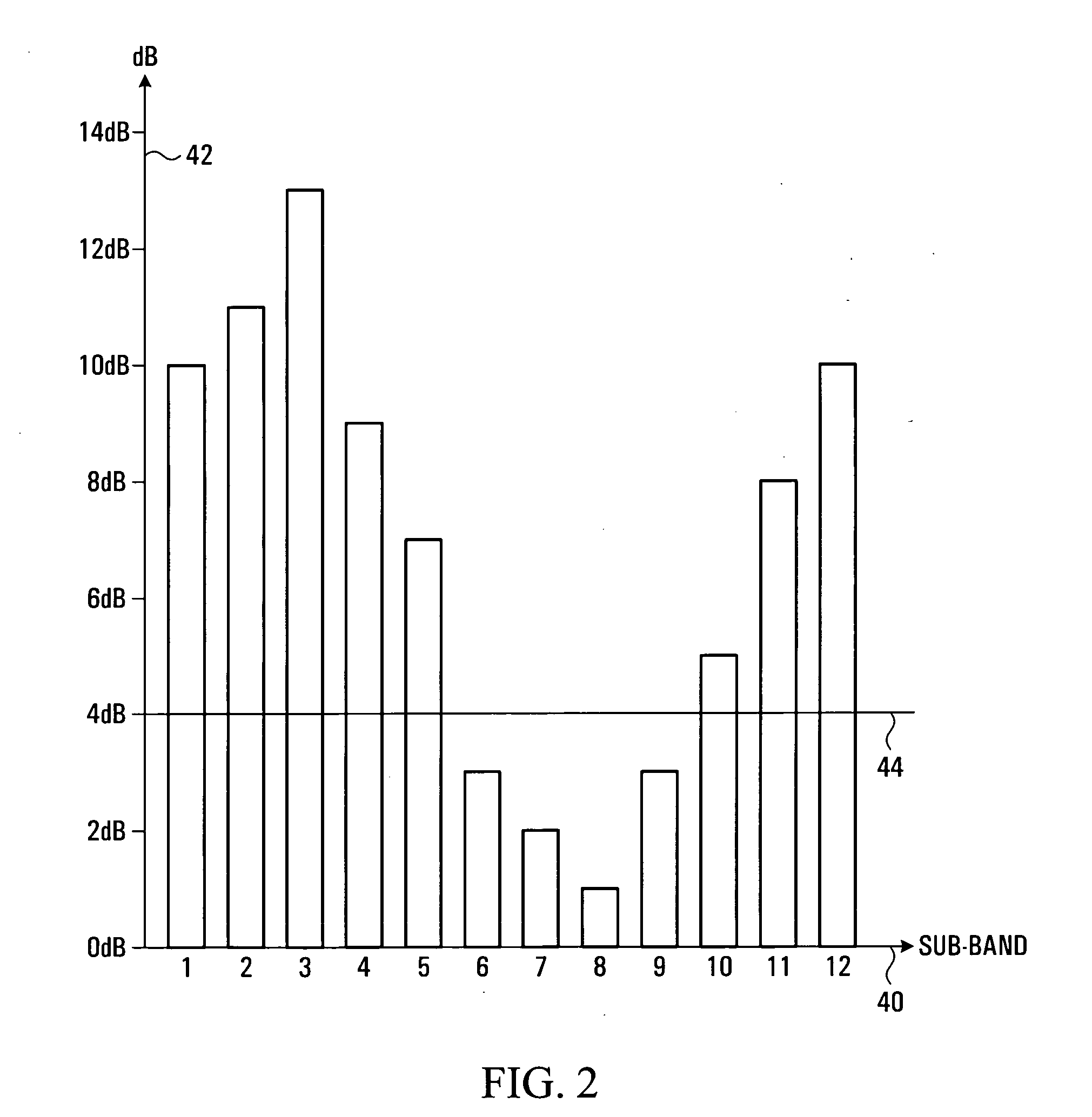Dynamic sub-carrier assignment in OFDM systems
a subcarrier and dynamic technology, applied in the field of digital radio communication systems, can solve the problems of converting transmission power from the remaining unused unacceptable subcarriers, and achieve the effect of improving the efficiency of the communication system, high transmission rate and high efficiency
- Summary
- Abstract
- Description
- Claims
- Application Information
AI Technical Summary
Benefits of technology
Problems solved by technology
Method used
Image
Examples
Embodiment Construction
[0019] Referring to FIG. 1, a portion of a radio communication system is shown. The radio communication system employs a plurality of sub-carriers to transmit traffic from a base station 10 to a remote unit 16. For example, the radio communication system may employ Orthogonal Frequency Division Multiplexing. A signal generator 36 within the base station 10 generates a signal 12. The signal is transmitted through a base station transmitting antenna 14. Each sub-carrier carries data encoded with a Link Mode. A Link Mode is a set of at least one transmission parameter, such as a modulation level, a coding rate, a symbol rate, a transmission power level, antenna directional parameters, or space-time coding parameters. The signal 12 propagates along a forward link to the remote unit 16, where it is received at a remote unit receiving antenna 18 as a received signal. A Fast Fourier Transform (FFT) processor 20 within the remote unit 16 separates the received signal into a plurality of sub...
PUM
 Login to View More
Login to View More Abstract
Description
Claims
Application Information
 Login to View More
Login to View More - R&D
- Intellectual Property
- Life Sciences
- Materials
- Tech Scout
- Unparalleled Data Quality
- Higher Quality Content
- 60% Fewer Hallucinations
Browse by: Latest US Patents, China's latest patents, Technical Efficacy Thesaurus, Application Domain, Technology Topic, Popular Technical Reports.
© 2025 PatSnap. All rights reserved.Legal|Privacy policy|Modern Slavery Act Transparency Statement|Sitemap|About US| Contact US: help@patsnap.com



